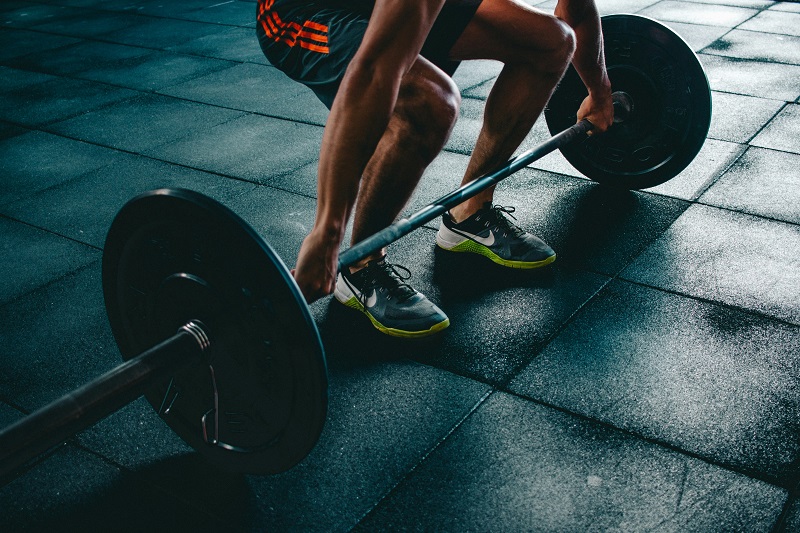Q: What’s the WOD?
WOD is “Workout of the Day.” The great folks at CrossFit post a workout for each day. The common splits are a) as posted, which is 3 days on/1 off, and b) 5 days on, two off.
If you need explanation on doing the WODs, check here or in the discussion board. Likely your question has been asked before.

Some insight and thoughts on sets and reps:
The WOD descriptions are very literal; don’t read into them. If it says “squats” it means bodyweight (aka “air squats”) – no added weight, unless it says back squats or front squats.
A “rep” or repetition is one iteration of a movement. One bench press, one squat. A “set” is a group of reps: 10 reps =10 bench presses, 10 squats. 3 sets is do a group of repetitions, rest, repeat, rest, repeat. So, 3 sets of 10 (reps) is 10/rest/10/rest/10. The rest interval is up to your recovery time, and the goal of the WOD. Obviously, if it’s a timed WOD, you want to rest less.
Also, rest and reps are frequently inverse. Sometimes a WOD says deadlift 3-2-2-1-1-1. This means a set of 3 reps, a set of 2 reps, another set of 2, a “set of one” aka a “single.” This few reps indicates maximal load, and indicates longer rest times.
Back to literal: if the WOD says 21-15-9 reps of bench and pullups in “rounds” (or any two or three exercises as given) you do 21 reps of exercise 1, followed by 21 reps of exercise 2, and 21 reps of exercise 3 if there is a third one. Now do 15 of the first, 15 of the second…9 of the first, 9 of the second.
Most likely you will be breaking the 21′s and 15′s (and maybe the 9′s) into subsets, aka “breakdowns.” This is based on your strength and conditioning. Remember if you need to adjust the weight downward, do so, since these are timed WODs.
Here’s some insight from Coach on the intent of CrossFit:
“CrossFit is in large part derived from several simple observations garnered through hanging out with athletes for thirty years and willingness, if not eagerness, to experiment coupled with a total disregard for conventional wisdom. Let me share some of the more formative of these observations:
- Gymnasts learn new sports faster than other athletes.
- Olympic lifters can apply more useful power to more activities than other athletes.
- Powerlifters are stronger than other athletes.
- Sprinters can match the cardiovascular performance of endurance athletes even at extended efforts.
- Endurance athletes are woefully lacking in total physical capacity.
- With high carb diets you either get fat or weak.
- Bodybuilders can’t punch, jump, run, or throw like athletes can.
- Segmenting training efforts delivers a segmented capacity.
- Optimizing physical capacity requires training at unsustainable intensities.
- The world’s most successful athletes and coaches rely on exercise science the way deer hunters rely on the accordion.”
Q: What if I can’t use the recommended weight?
Use a weight that’s manageable to you, or use a percentage of the weight prescribed. Assume the “generic” male crossfitter weighs 175 and the prescribed weight is 95 lbs. Thus, you’d pick a weight that’s approximately 55% of your bodyweight.
Q: Is the WOD Enough? Should I do more?
Part of the crossfit philosophy includes pursuing/learning another sport or activity, and many crossfitters are also martial artists and competitive athletes in a variety of disciplines.
However, if you work the WODs hard, you will find yourself at an improved level of fitness, and for lots of us, the WOD is our primary “sport.”
If you pursue another activity, you will need to balance your work/rest cycles and be sure to allow for recovery. Sometimes, you will need extra days off or to consider a WOD as “active rest” done at a lower intensity.
Q: Will I/can I get big doing CrossFit?
If you train the WODs hard, and eat right and get lots of sleep, you will definitely gain lean mass, lose fat, and yes, you can build muscle mass with the crossfit protocol. More specifically, according to Coach, Here is a hierarchy of training for mass from greater to lesser efficacy:
- Bodybuilding on steroids.
- CrossFitting on steroids.
- CrossFitting without steroids.
- Bodybuilding without steroids.
The bodybuilding model is designed around, requires, steroids for significant hypertrophy.
The neuroendocrine response of bodybuilding protocols is so blunted that without “exogenous hormonal therapy” little happens.
The CrossFit protocol is designed to elicit a substantial neuroendocrine whollop and hence packs an anabolic punch that puts on impressive amounts of muscle though that is not our concern. Strength is.
Natural bodybuilders (the natural ones that are not on steroids) never approach the mass that our ahtletes do. They don’t come close.
Those athletes who train for function end up with better form than those who value form over function. This is one of the beautiful ironies of training.
